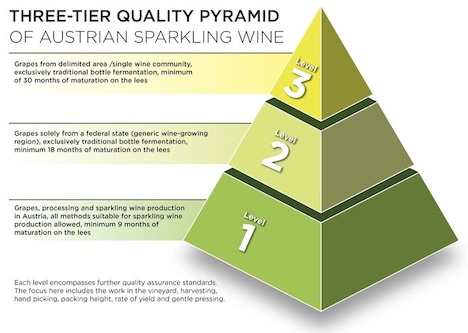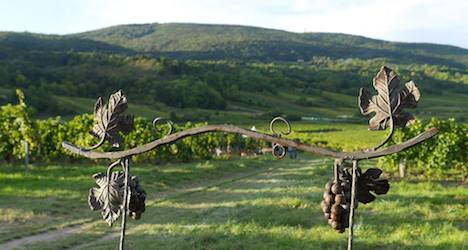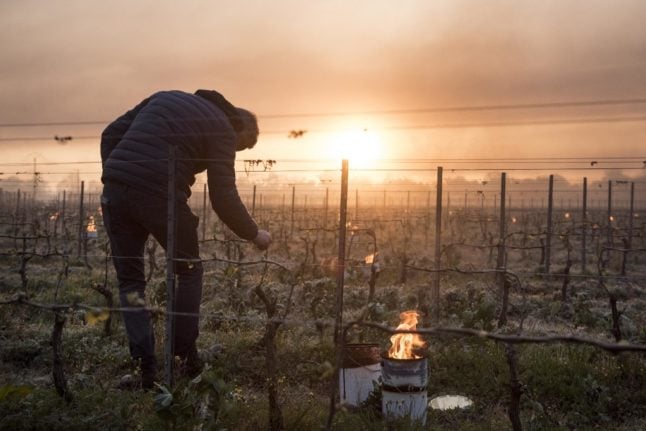The Austrian Wine Marketing Board, together with the Austrian Sparkling Wine Committee, has introduced a three-tier quality pyramid to help consumers understand the classification of Austrian sparkling wines, and to set standards for winemakers.
It claims that Level 3 Austrian sparkling wines are "on a par with the highest standards maintained by the world's leading sparkling wines, such as Champagne or Franciacorta, and in certain aspects, even surpass them."
The three tiers are as follows:

Level One: Guarantees that all grapes and base wines are from Austria and that production takes place in Austria. Maturation on the lees must last at least nine months.
Level Two: Requires that wines undergo the méthode traditionnelle process – secondary fermentation in the bottle. The origin of the grapes and base wines must be from one generic wine growing region, such as Lower Austria. Wines must be matured on the lees for at least 18 months.
Level Three: Requires the grapes and the wines, fermented according to méthode traditionnelle, to be from a specific community, such as Poysdorf or Langenlois. Wines must be released at least three years after harvest and with no fewer than 30 months of maturation on the lees.
Austria produces 12 million bottles of sparkling wine each year, of which 2.5 million bottles are exported. One Austrian hotel has what is probably the best wine list in the world, containing many wonderful Austrian sparkling wines.
"There has been growing interest in our sparkling wines, especially after the success achieved with Austria's quality still wines," said Benedikt Zacherl of the Austrian Sparkling Wine Committee.
"Production and exports of our sparkling wines are expected to rise. So the new quality pyramid will help give consumers a clear orientation of the wines and their quality levels."
Deadliest wine in the world?
The new standard is expected to be incorporated into Austrian Wine Law in spring 2015, according to a report from Decanter.com. Austria has been very strict over its wine laws since the huge scandal in 1985, when certain Austrian wineries adulterated their wines with anti-freeze.
In one record-setting wine – a 1981 Welschriesling Beerenauslese from Burgenland – 48 grams per litre of diethylene glycol was detected, which meant that drinking a single bottle could have been fatal.
Austrian wine law is based on European wine legislation. However, Austria has maintained its autonomy to a certain degree, upheld by its controlled origin, its legal maximum yield, a designation for quality wine, as well as an official quality control of wine.
Austrian wines are either wines with origin (Quality Wine, DAC, Landwein) or generic wines from Austria. The categories are defined by the origin of the grapes and the sugar content of the wine must, as expressed by the Klosterneuburg Must Weight (KMW) scale.



 Please whitelist us to continue reading.
Please whitelist us to continue reading.
Member comments